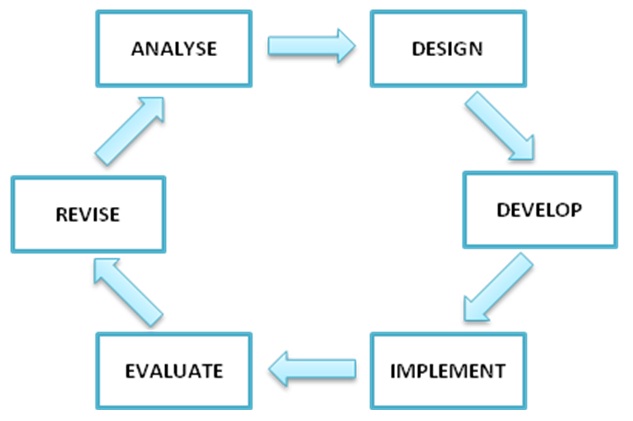Systems Approach to Educational Problem Solving
A discussion on systems definition of ‘educational technology' provided in the preceding section reflected that ET is a dynamic field which involves mobilisation of human and mechanical resources efficiently and effectively in order to facilitate and leverage all aspects of learning, and also guide the transformation of educational systems and practices in order to achieve positive change in the society.
The systemic perspective taken in the definition has its origin in the General Systems Theory put forward by Ludwig von Bertalanffy in 1945 as reported in Bertalanffy (1950).
- Systems theory is the ‘the trans-disciplinary study of the abstract organisation of phenomena, independent of their substance, type, spatial or temporal scale of existence. It investigates both the principles common to all complex entities, and the (usually mathematical) models which can be used to describe them' (Bertalanffy, 1945).
- Cybernetics is another concept which contributed to application of systems approach to problem solving both in physical and social sciences. Norbert Wiener (1894-1964) introduced the term cybernetics to describe the science of control. This term is derived from the Greek word meaning ‘steersman'. It is the study and design of devices for maintaining stability, or for attaining a goal or target. Its central concept is feedback. It is applicable to both living and man-made phenomena, hence bridges biology, engineering and social phenomena. The key to this process is continuous correction of the output system by signals representing detected errors of the output, known as ‘negative feedback'.
Cybernetics and systems theory study basically the same aspects of organisation .In so far as it is meaningful to make a distinction between the two approaches, we might say that systems theory has focused more on the structure of systems and their models, whereas cybernetics has focused on how systems function and how they control their actions, how they communicate with other systems or within their own components or subsystems.
Since structure and function of a system cannot be understood in separation, it is clear that systems theory and cybernetics should be viewed as two facets of a single approach. "
(Cited in http://en.wikibooks.org/wiki/Systems_Theory/Cybernetics, accessed 14 February 2012)
Let us make an attempt to understand the concept on how ‘systems approach' is applied in solving problems in educational situations better.
Section 3.2 of A Systems approach to open and distance learning, indicates that systems approach sets the conditions for proceeding in an orderly way in order to solve problems in societal situations including education. Systems approach when applied to problem solving goes in phased and cyclical manner as given below:

Let us examine each of these steps and understand the outputs from each phase.
The following table will help you in summarising what is given in the resource above.
|
Phases |
Output |
|
1. Analysis involves a detailed examination of all facts of the problem |
1. A clear statement of the problem
|
|
2. Design requires the preparation of a detailed solution |
2. A detailed plan that describes how, when, by whom and at what cost the problem will be solved. |
|
3. Development must address the requirement of relevant materials. |
3. A complete course or programme package including all materials, tools, equipment and plans of delivery, etc. |
|
4. Implementation involves putting the solution into practice. |
4. Learners' progress and performance records, data from variety of sources. |
|
5. Evaluation-not an ‘add on' but an integral component. |
5. Analysis of records and data
|
|
6. Revision -including review of all decisions and activities of previous phases. |
6. A revised course of programme including the course materials learner support and evaluation plan. |
What are the six phases involved in systems approach to educational problem solving? Describe each step in one sentence.
Licensed under the Creative Commons Attribution 3.0 License